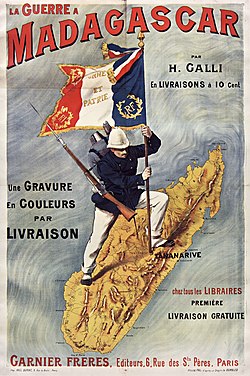
Madagascar, then officially known as French Madagascar, was a French colony at the outbreak of the Second World War, having been under French administration since 1885. It played an important role in the war due to the presence of critically important harbors, the contribution of Malagasy troops, and was also the scene of fighting between Allied and Vichy French forces in 1942. After the fall of France in 1940, Madagascar became a crucial flashpoint in contention between the Free French movement and Vichy France. The island was also consequential in the Pacific theater of the war as Imperial Japanese naval forces operated unopposed off the island for some time.
Contents
In 1942, the British and several other Allied forces launched an invasion of Madagascar, seeking to protect its position as an important juncture in Allied shipping and deny its use to the Axis. In addition to its role as a key link in the Allied supply lines and major provider of troops, Madagascar was also briefly considered as the solution to the Jewish Question by the government of Nazi Germany who openly floated deporting Europe's Jewish population to the island in 1940. This scheme known as the Madagascar Plan never came to fruition because of the British takeover. The island was officially handed over from the British to Free France in 1943 under whose control it remained for the remainder of the war.


